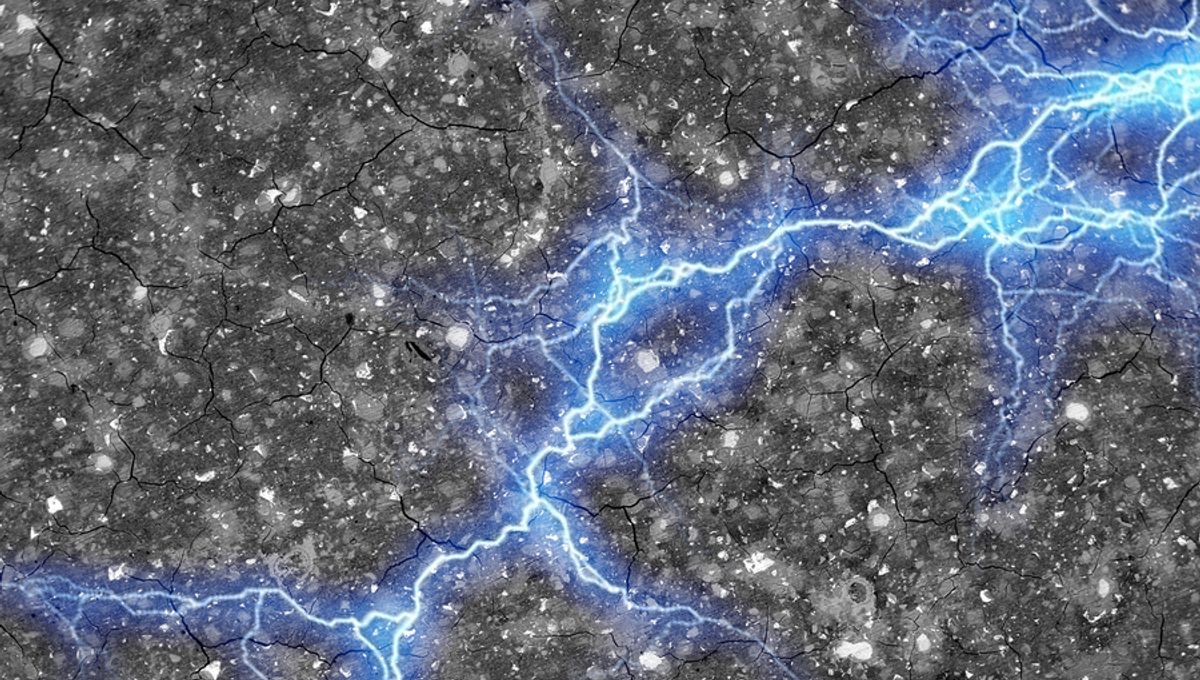
Concrete is, to put it mildly, really bad for the environment. It’s the most-consumed product on the planet, outside of water, and its carbon footprint bears that out: on its own, the production of cement and concrete accounts for a whole eight percent of global CO2 emissions, or more than four billion tonnes of the greenhouse gas per year.
But a new material developed by researchers at MIT might be able to help counter that problem. By combining water, cement, and a sooty substance called carbon black, they’ve constructed an energy storage device known as a supercapacitor – similar to a giant, concrete battery.
“The material is fascinating,” said Admir Masic, an MIT scientist and one of the researchers behind the invention, in a statement released last year.
“You have the most-used manmade material in the world, cement, that is combined with carbon black, that is a well-known historical material – the Dead Sea Scrolls were written with it,” he explained. “You have these at least two-millennia-old materials that when you combine them in a specific manner you come up with a conductive nanocomposite, and that’s when things get really interesting.”
The material’s incredible properties are thanks to the particular nature of carbon black – both highly conductive, and also water repelling. This means that, as the mixture sets, the carbon black essentially rearranges itself into a branching network of wires threading through the cement.
It’s not only a huge potential step in the global transition towards renewable energy, the researchers say, but it also has intrinsic advantages over more traditional batteries thanks to its recipe. The carbon cost of cement notwithstanding, the new material is made from just three components, all cheap and plentiful; the lithium that standard batteries rely on, meanwhile, is finite and CO2-expensive – “particularly in hard rock mining, for every tonne of mined lithium, 15 tonnes of CO2 are emitted into the air,” MIT’s Climate Portal notes.
Since cement is unlikely to go anywhere soon, combining it with an easy and efficient energy storage system seems like an obvious win, then. “Given the widespread use of concrete globally, this material has the potential to be highly competitive and useful in energy storage,” Damian Stefaniuk, one of the researchers behind the invention, told BBC Future this week.
“If it can be scaled up, the technology can help solve an important issue – the storing of renewable energy,” he said.
How might that be achieved? One potential solution: use it to pave roads, allowing the highways themselves to harvest solar energy and then wirelessly charge electric vehicles that drive along them. Capacitors release energy much faster than normal batteries – that’s why they’re not that useful for everyday power storage, despite having other advantages such as higher efficiency and lower levels of degradation in performance – making it close to ideal for giving moving cars a power boost in this way.
Another tantalizing idea, though, is to use it as a building material. In their paper on the material, the team calculated that a block of just 45 cubic meters of the carbon back-cement mix – to put that in perspective, you could fit around 55 of them in an Olympic swimming pool – would be able to store enough energy to power the average US household.
“Since the concrete would retain its strength, a house with a foundation made of this material could store a day’s worth of energy produced by solar panels or windmills and allow it to be used whenever it’s needed,” the team suggests.
“That’s where our technology is extremely promising, because cement is ubiquitous,” said MIT structural engineer Franz-Josef Ulm.
“[It’s] a new way of looking toward the future of concrete.”
The paper is published in the journal PNAS.
Source Link: New Kind Of Cement Could Turn Homes And Roads Into Giant Batteries